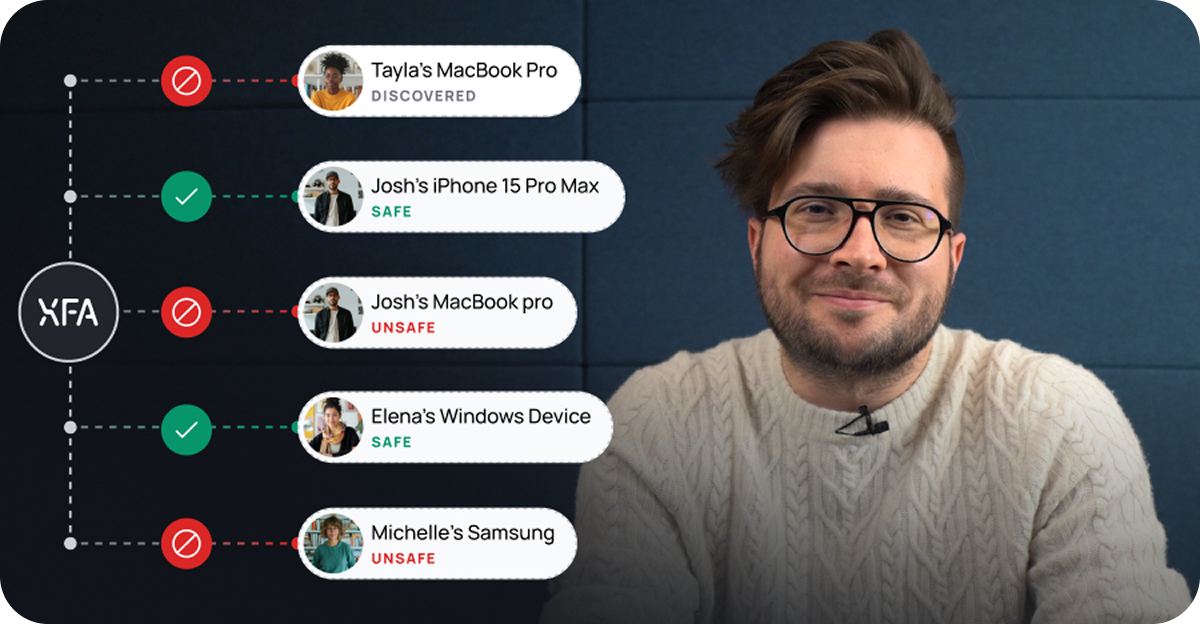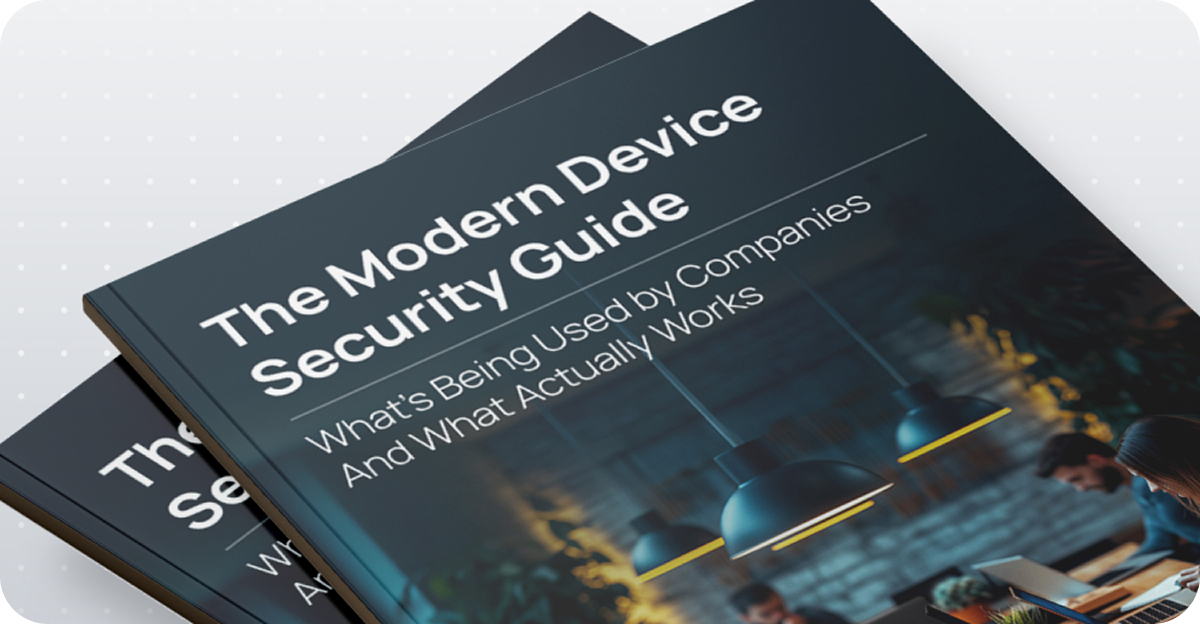XFA compared to 1Password XAM
See why businesses choose XFA for smarter security insights, fewer login disruptions, and flexible integration without unnecessary complexity.
What is XFA?
XFA is a device security solution that seamlessly identifies every device used by people in your organization, informs users about risks, and verifies security policy compliance for each device during login, all without requiring direct device control or management.
What is 1Password XAM?
1Password is a password manager that helps users and organizations securely store and manage passwords, credentials, and other sensitive information. 1Password's platform includes multiple additional services, including 1Password XAM (Extended Access Management, formerly known as 'Kolide'), which aims to make sure that every device used for signing in to applications is secure. This specific feature will be compared to XFA.
Why choose XFA over 1Password XAM?
XFA does not need invasive permissions
XFA is built from the ground up to function without system or admin-level permissions, making it effortless to install while ensuring users retain full control over their devices. Unlike solutions that require deep system access, XFA enhances security without compromising privacy or requiring intrusive permissions. This makes it ideal for securing not only company-provided devices but also personal and contractor devices.
XFA discovers all unknown devices in advance
Both 1Password XAM and XFA can block access to an insecure device when attempting to log in to an application. However, to simplify onboarding with an advanced device trust solution, XFA proactively identifies all unknown devices in advance. It does this by analyzing access logs from your identity provider (e.g., Google, Microsoft, Okta) without requiring any action from end users. This gives IT admins the visibility needed to understand the device landscape, gradually refine security policies, and provide better support. As a result, disruptions during login attempts are minimized, and admins gain valuable insights—potentially raising awareness—without immediately enforcing strict policies.
XFA informs users by email—even for devices without the client.
Both 1Password XAM and XFA can warn users if a device fails to meet minimum security standards during login. However, XFA goes further by proactively notifying users in advance via email, even for devices without the client. This ensures users are aware of potential security issues or required actions before logging in, helping them address concerns early without being unexpectedly interrupted.
XFA links devices to known vulnerabilities (CVEs)
XFA automatically associates devices with relevant Common Vulnerabilities and Exposures (CVEs) based on their OS and browser versions—eliminating the need for manual filtering. This streamlines vulnerability tracking, providing a clear overview of potential risks and enabling more effective reporting and remediation.
XFA is not tied to a specific ecosystem
XFA is a standalone tool that integrates with any identity provider and application, without being tied to another product or platform, while 1Password XAM is part of 1Password.
Want to see how XFA fits your business?
Let's talk.



